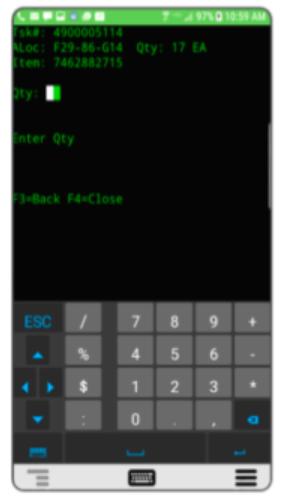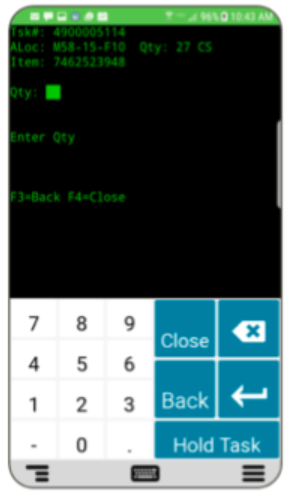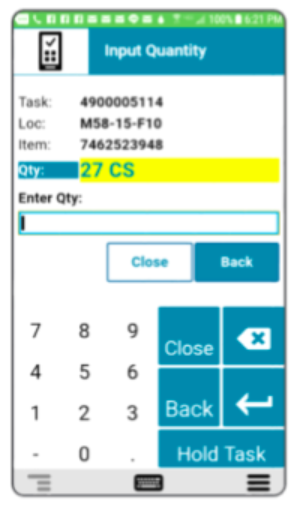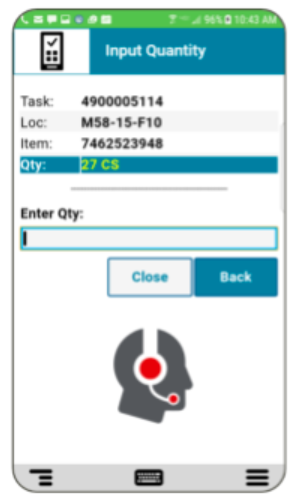Efficiency Quick-Wins Stem from Warehouse Evolution vs. Revolution
There are some great insights to be unearthed in the new webinar New Data: Surprising Discoveries and Key Takeaways on Warehouse Efficiency, hosted by VDC Research and Ivanti. See what nearly 150 global warehouse technology leaders are saying about their mobile applications and OS migration plans.
Here are six key takeaways from the webinar:
- 61% of large enterprises (1,000+ employee firms) claim that mobile technology is a critical priority for their organization to improve operations and enhance productivity.
- 36% of organizations were dissatisfied with the speed at which their business was adopting mobile applications.
- Efficiency in inbound/outbound handling, storage, inventory control, as well as “pick and fill” is critical; slow and inaccurate receiving, sortation, and put-away is not an option.
- Mobile-enabled workers can perform tasks heads up and hands free.
- Optimizing workflows and mobile can liberate workers from tasks that tax productivity.
- Modern mobile solutions can integrate smoothly with your present IT infrastructure.
Cost/Time the Primary Barrier to Upgrading Mobile Devices and Apps
Aligned with the webinar is the white paper Taking Advantage of Apps and App Modernization in Warehousing that’s designed to answer the question, “What are the issues and barriers associated with implementing modern mobile devices and applications to support warehouse operations.”
In the webinar, Eric Klein of VDC Research explains that nearly half of those 150 global warehouse technology leaders surveyed cited cost/time as the primary barrier to upgrading mobile devices and their associated applications.
Klein also says that improving and optimizing the user experience of your apps can help ease the burden of training new employees—and save time training seasonal employees. Delivering a touchscreen mobile experience to web-based ERP and SCM applications on modern mobile hardware can eliminate costs associated with app modernization.
Evolution vs. Revolution: Industrial Browsers Can Ease the Transition to Modern Mobile Platforms
As Microsoft ends support for Windows Mobile and Windows CE over the next few years, you’ll need a migration plan. Android is looking more and more like the operating system for your next-generation mobile computers. But Android is a complete platform change for your business, so speed-to-user-acceptance is key.
With Velocity, powered by Wavelink, you can bring your existing telnet apps to Android—starting in their existing “green screen” form—and then optimize, modernize, and voice-enable these apps in four easy steps. Your workers have time to adjust to new hardware, then gain a fully modernized user experience and workflows optimized to streamline their tasks. Improve your perfect order rate and deliver to customers faster – all while minimizing the risk of operational disruptions to your business.
Move to Android in Four Easy Steps
Ivanti® Velocity, powered by Wavelink, you can bring your existing telnet and web applications to a new generation of Android mobile computers. You increase productivity while setting the pace for each step in the progression to achieve a successful deployment.
Step 1: Migration

Your workers will be expected to adapt to a new mobile device. Since change can cause confusion, minimize it by preserving your existing telnet client interface on a new device screen. Let your workers adjust to the new hardware. They’ll get comfortable with new devices faster if the software experience remains familiar.
Step 2: Optimization

As your workers become familiar with their new Android mobile computers, you can begin building in enhancements to speed up your applications. Here’s where you examine steps in your workflows that can be automated (such as calculations), eliminate redundant tasks/steps, and so on with powerful scripting in the Velocity console.
Step 3: Modernization

Once your workers have mastered their new devices and your workflow optimizations are deployed, you’re ready to modernize the user interface. In this step, you transform your existing telnet or browser app into a touch-enabled app that looks and feels like it was made for Android. This modern, HTML user interface will feel like the apps your workers interact with on their personal smartphones—raising task speed and accuracy with familiar tap-and-swipe navigation.
Step 4: Speech

Empower your workers to do even more by voice-enabling your Velocity application with Speakeasy. Adding voice reduces the time workers spend reading and inputting data during a task. Speakeasy uses text-to-speech to read task instructions to your worker, and allows workers to speak commands and data back into your applications.
Learn more about these four steps here.

